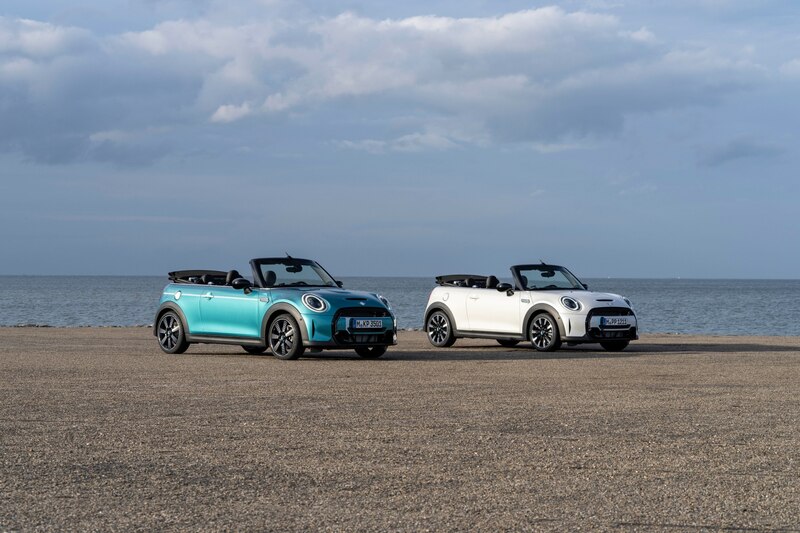TWO days ago the flag dropped at the Dakar 2023 in Janbu, north of Saudi Arabia. From the Sea Camp parc firmé the three-car Toyota factory team primed its GR DKR Hilux T1+ race cars for the world’s toughest rally-raid race. After a thorough shakedown to confirm that everything works as expected the team, flag off was the morning of New Year’s Day.
On this first day of racing at 48 km, Toyota already showed its grunt and skill as Toyota Gazoo Racing’s Giniel de Villiers posting the best time in the first stages of the race. By this time, his team-mate Nasser Al Attiyah is now in 2nd place, 1’12’’ behind the South African with Stéphane Peterhansel and Martin Prokop on a Ford are neck and neck, 1’20’’ behind the stage leader, with all the gaps very tight.
At the end of stage one–a 360-kilometer spin around Sea Camp– it was rally legend Carlos Sainz on an Audi e-Tron that took the victory. Toyota Gazoo Racing’s GR DKR Hilux under the helm of Nasser Al-Attiyah finished sixth overall in the car category.
“The Dakar Rally really is the big one! We’ve had a great year, winning the first ever W2RC title. But we’d love to add another Dakar victory to the list, and we are sure that the car is good enough to bring us that win,” Al-Attiyah said.
“We’ve had a stunning year building up to this race, starting with a win at the Dakar in January this year. This was followed by the W2RC title, as well as the South African Rally-Raid Championship win, so we feel that we are extremely well prepared for the race. All I want now is for the flag to drop, so that we can go racing in order to see how our latest GR DKR Hilux T1+ stacks up against the competition,” Glyn Hall, TGR Dakar Team Principal said.
The 11km-long race prologue, which is used to determine the starting orders for the first stage, ran on the afternoon of New Year’s Eve. Fourteen competitive stages will follow, with a rest day following Stage 8.
For TGR, the 2023 Dakar Rally will offer an opportunity to defend the crown it won, when Qatar’s Nasser Al-Attiyah and French co-driver, Mathieu Baumel, brought the GR DKR Hilux T1+ home in first place at the end of the 2022 edition of the race. This was Nasser and Mathieu’s second victory for the team, and they will be aiming for a repeat performance early in the new year.
South African Giniel de Villiers, has one of the best Dakar records in history, having competed in twenty Dakars to date. He won the race in 2009, and has been on the podium seven additional times. He has only finished outside the Top 10 once in twenty races, and will be aiming for another solid result, again with co-driver Dennis Murphy, also from South Africa, beside him.
Dakar 2023 promises to be one of the toughest yet, consisting of 14 stages rather than the dozen that has become the norm over the last few editions of the race. Not only that, but the route also ventures further into the so-called Empty Quarter of Saudi Arabia than ever before. Add to that the Rest Day, which comes well after the mid-point of the race, as well as the removal of mid-stage rest-and-refuel points, and it is clear that the upcoming rally will be tough.
With that said, the GR DKR Hilux T1+ has seen constant improvement since the last Dakar, winning the inaugural W2RC in the hands of Nasser and Mathieu, and taking Giniel to yet another title in the South African Rally-Raid Championship, which serves as one of the test series for the team. With refinements to the car’s quality, reliability and durability, the team is confident that it has built an even better car than the one that won the race in 2022.
The route for the upcoming Dakar Rally starts at the so-called Sea Camp, on the North-Western coastline of Saudi Arabia. Both the prologue and Stage 1 will be staged from here, before Stage 2 takes the rally towards the stunning rocks and canyons around Alula. Next up is Stage 3 towards Ha’il, where the bivouac will remain in place for three days before shifting to Al Duwadimi for two days. Stage 8 will see the rally reach the Saudi capital of Riyadh, for a much-needed Rest Day.
From here, the route continues in an Eastward direction towards Haradh, before shifting into the Empty Quarter for the final few days of the event. This year’s Marathon Stage — where the crews race away from the bivouac to an unsupported camp in the desert, before racing back the following day — will take place near the end of the race, and may well change the outcome of the event.
The final stages of the race will take the crews from Shaybah to Al-Hofuf, and on to the city of Dammam, on the Arabian Gulf. While the closing three stages of the rally all feature distances under 200km, the organizers have cautioned that these stages may well prove the toughest of the event, and that competitors should not take them lightly based purely on their relatively short distances.
Dakar 2023 is scheduled to finish on January 15 in the city of Dammam. This will be the Dakar’s first visit to the city, and also the first time that the race spans across the entire Saudi Arabian landscape from coast to coast.




